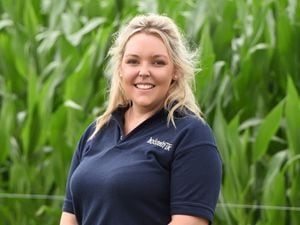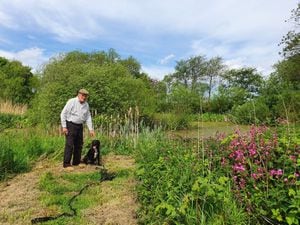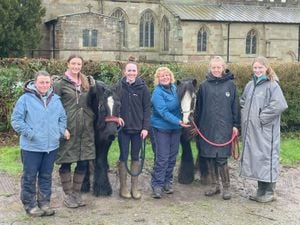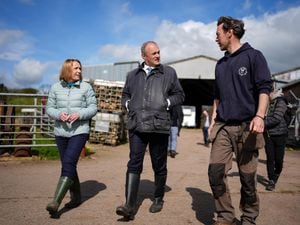50 years on: How foot-and-mouth disease tore Shropshire apart
Half a century on, there is still sadness in Henry Yates's voice as he talks about the effect the 1967 foot-and-mouth disease outbreak had on his family.
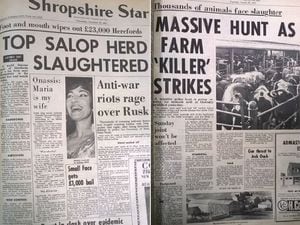
"My brother-in-law Tony Rowlands and my sister Margaret were farming at Colemore Green in Bridgnorth," he recalls.
"They rang to say they had a suspected case of foot-and-mouth, and within hours they had to slaughter all their animals."
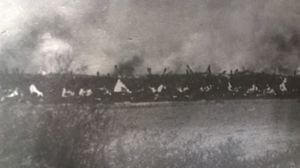
Tony and Margaret were distraught, but there was little Henry could to do help.
Quarantine restrictions meant the Rowlands were not allowed to leave their farm, and Mr Yates was not able to visit them either for fear of spreading the disease.
"It was very hard," says Mr Yates, of Middleton Scriven, near Bridgnorth.
"They were terribly upset, and normally we would have gone over to console them, as you would with any other bereavement.
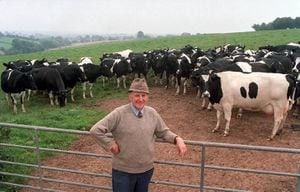
"We would talk over the phone, but that's all we could manage. We had to spend Christmas apart, normally we would have all come together as a family. It was a rotten Christmas."
It was one of the biggest crises in farming of the 20th century. And although it was dwarfed in scale by the 2001 outbreak – which was concentrated largely in the south-east and north of England – its impact on Shropshire was unlike anything that has been seen since.
At the end of October 1967, farmer Norman Ellis noticed a sow in his stockyard had gone lame.
He called the vet, and then went to the livestock market in Oswestry, and when he returned he received the most devastating of news: the sow had foot-and-mouth disease, and the Ministry of Agriculture had been alerted.
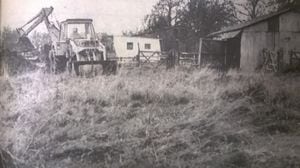
For Mr Ellis, it was a personal tragedy. Every animal on his Bryn Farm in Nantmawr, near Oswestry, was slaughtered the following day. But it was too late to prevent a national disaster.
By the time the vet delivered his verdict, Mr Ellis had sold two cows at the market, and a massive police hunt was launched to trace every animal which had been sold that day.
The disease spread like wildfire. Within a week, 43 farms were affected across north Shropshire and Cheshire. Within 10 days, it had spread east as far as Newport and as far west as Llangollen. After four weeks, it had reached Wolverhampton and Worcestershire.
For Mr Yates, the abiding image was of the burning pyres which could be seen for miles around as thousands of pigs and cattle were destroyed.
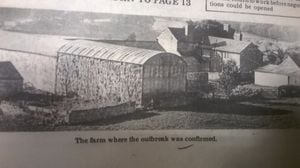
"You could see them for miles around. Every day there were updates in the newspaper of where the latest cases had been found," he says.
The Shropshire Star reported how the skies around Oswestry were filled with black acrid smoke as hundreds of carcasses were burned at a time.
"Tongues of flames 100 yards long licked at the bodies of 129 slaughtered cattle and 64 sheep on Whitehall Farm, two miles from Oswestry," wrote reporter Jim Willding-Jones.
"It is rather frightening," a Ministry of Agriculture official said.
"But there is one good thing – we are keeping up with dealing with new cases by using a large number of men and a large amount of machinery."
Mr Yates remembers how nothing was left to chance, and how the measures seemed draconian at the time.
"Looking back, it was probably the right thing to do, but they would destroy anything if they thought there was the slightest risk."
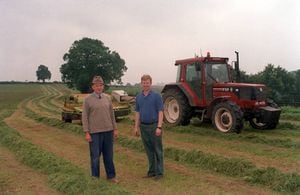
He remembers it as being a very difficult time for farmers, although he is well aware that he was one of the luckier ones.
"All the markets were shut, there weren't any meetings, and we didn't allow anyone onto the farm.
"I spent that entire autumn and winter hedge-laying," he says.
"That was a craftsmen's job, but I was able to do it, and it filled up the time.
"We had to be disinfected if we left the farm, and such as if my wife wanted to go into town.
"It was a hard time, but as a dairy farm we weren't hit as hard as some, certainly not as hard as those in north Shropshire.
"In those days, the milk came in churns, so we could leave it at the end of the load for the lorries to pick up," he says.
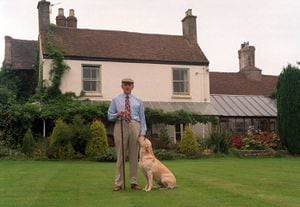
"In 2001, it was delivered in tankers which had to come onto the farms, so it was much more difficult then."
Ministry and private laboratory workers were brought in to oversee the cleaning of lorries taking essential supplies to farms and collecting milk.
Road construction was suspended to allow machinery to be used to dispose of slaughtered stock and black smoke hung over burning carcasses.
Some panic-stricken farmers patrolled farm boundaries with shotguns to shoot wild animals, birds and even domestic pets that could have carried the virus.
The cause of the epidemic was the subject of much speculation and controversy. One theory was that the virus was brought into the country in imported frozen beef. Suggestions that the beef may have come from Argentina, a key source of Britain's frozen beef imports, were strongly denied by the Argentinian government.
An official report later said that some bones which the Ellis family had bought from a local butcher's for the farm's three sheepdogs was the probable cause of the epidemic.
They had been boiled before being given to the dogs, and an analysis later found that they contained the virus.
Tests also revealed that Mr Ellis's slaughtered cattle were free of the disease, and the official report concluded that it must have originated in his pigs. While Mr Ellis didn't feed swill to his pigs, the bones fed to his dogs could have been carried to where the pigs had been.
John Bennett, who was a young farmer in Worcestershire at the time, reckoned the disease spread south when a farmer in his home county had fed his pigs with skimmed milk which had been bought in Shropshire.
One of the most notable casualties was a world-famous herd of Herefords on a large farm near Shrewsbury.
Fifty cows, 38 calves and a bull worth £23,000 – about £400,000 at today's prices – were slaughtered at Shrawardine Castle Farm in Montford Bridge. The herd could trace its lineage back to 1919, and had won prizes at the Royal Show, the Three Counties and the West Midlands Show.
At Sandford Hall in West Felton, near Oswestry, 600 cattle – including a famous prize-winning bull and a 200-strong Guernsey pedigree herd – had to be destroyed. Owner Hugh Richards described the herd as "irreplaceable".
By the end of November, the epidemic had peaked, although it was June 1968 before the disease was fully brought under control. By that time, 400,000 animals had been destroyed, costing the government about £27 million in compensation.
But Mr Yates remembers that the compensation scheme left many farmers out of pocket, particularly those who were hit early on.
As the livestock markets reopened, the price of animals rose as they became more scarce.
"Lots of people were replacing dairy cows, and by the time they had been compensated the cost of replacing them had gone up," he says.

